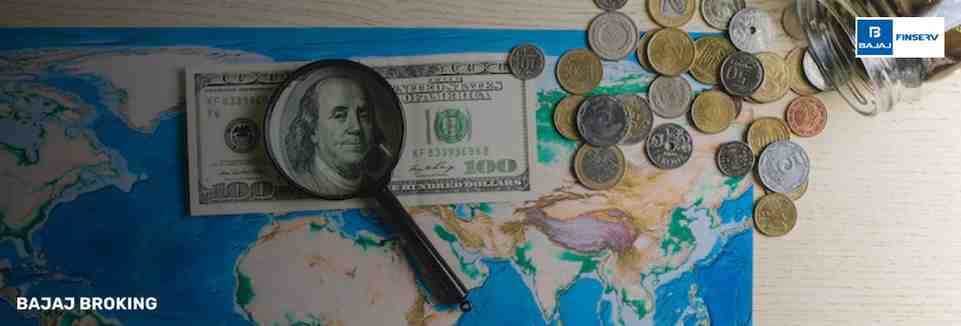The foreign exchange (forex) market is a global decentralized marketplace where currencies are traded at current or predetermined rates. It enables international trade, investment, and cross-border transactions by allowing currency conversion. Operating 24 hours a day across major financial hubs, it connects banks, institutions, corporations, and traders.
Exchange rates fluctuate based on economic indicators, interest rates, political developments, and market sentiment. In India, the forex market is regulated by the Reserve Bank of India (RBI) and SEBI to ensure transparency and stability. It includes segments like the spot, forward, and derivatives markets, making it one of the world’s largest financial systems.
History of the Foreign Exchange Market
The foreign exchange market is steeped in history, as people have engaged in trading goods and exchanging coins for centuries. The mechanisms of today, however, are more recent, beginning in the 1970s after the collapse of the Bretton Woods agreement. Prior to that time, many of the major currencies were fixed to the US dollar.
Once the system changed, rates started moving freely and with much more fluctuation. By the 1990s, the advent of electronic trading took forex trading to a level that was faster and easier. In India, reforms as well as the introduction of currency futures helped provide much more space for traders.
Types of Forex Exchange Market
Before trading, it helps to know the main types of forex markets. Each one works differently and serves a specific purpose.
Spot Market:
In the spot market, currencies are bought and sold for immediate delivery at current exchange rates. It is the simplest and most liquid form of the forex market, forming the foundation for other markets.
Forward Market:
The forward market involves agreements made today to exchange currencies at a future date and a predetermined rate. It is primarily used by businesses to hedge against unexpected exchange rate fluctuations and manage future payment risks.
Futures Market:
In the futures market, standardized contracts for currency exchange are traded on regulated exchanges. This provides transparency, security, and a formal structure, benefiting both hedgers and speculators seeking to manage or profit from currency movements.
Options Market:
The options market allows traders the right, but not the obligation, to buy or sell currencies at a fixed rate on a future date. It offers flexibility and helps manage currency exposure and potential losses effectively.
How the Forex Market Operates?
The forex market works on simple ideas. Knowing these basics makes it easier to understand how money moves across countries.
Currency pairs: Currencies are traded in pairs like USD/INR. The first is the base currency, and the second is the quote currency.
Price changes: Rates go up or down depending on demand, interest rates, and global news. These changes create risks but also chances to make a profit.
Decentralised system: There is no central office. Transactions happen online through banks, brokers, and trading platforms worldwide.
24-hour trading: The market follows time zones. It starts in Asia, moves to Europe, and ends in North America, keeping activity non-stop.
Advantages of the foreign exchange market
The forex market has many benefits. These points show why people and businesses use it daily.
High liquidity: Large daily trading makes it easy to buy or sell quickly.
Accessibility: Open almost all day across time zones, so participants can trade at flexible hours.
Lower costs: Trading costs are often less compared to other markets because of narrow spreads.
Diversification: Traders can spread risk by investing in different currencies influenced by different events.
Disadvantages of the forex market in India
Even with benefits, Indian traders face some limits. These rules are meant to protect the financial system.
Fewer currency choices: People can only trade a few pairs such as USD/INR, EUR/INR, GBP/INR, and JPY/INR.
No global OTC access: Indian traders cannot use international online forex platforms. They must stick to domestic markets.
High volatility: Rates can change suddenly due to world events, which can cause losses if not managed.
Leverage limits: Indian exchanges control how much leverage traders can use. This reduces risks but also lowers possible returns.
Participants in a foreign exchange market
Different groups take part in the forex market. Each has its own reason for joining.
Central banks: Control money supply, set policies, and sometimes adjust currency rates.
Commercial banks: Assist clients with currency conversions and may trade to mitigate their own exposure.
Corporations: Corporations use forex to effectively manage payments and receipts from international operations.
Institutional investors and hedge funds: Deploy currency risk exposures to hedge portfolios or react to macroeconomic developments.
Risks Associated with Forex Trading
Trading in forex is not without risks. These are important to understand before entering the market.
Market volatility: Currency values move fast after news, policies, or global events.
Leverage risk: Leverage can increase both gains and losses. Careful planning is needed.
Geopolitical risk: Wars, conflicts, or diplomatic issues can push rates suddenly.
Regulatory limits: In India, strict rules stop traders from using offshore markets without RBI approval.
Conclusion
The foreign exchange market allows currencies to be exchanged and supports global trade, travel, and investment. It operates continuously across global time zones, connecting people, companies, governments, and banks. In India, it operates under regulation by the Reserve Bank of India to support stability and fairness in the system.
The global market professes liquidity and flexibility, but it still has risks, volatility, and leverage. Understanding the operating characteristics of the market, who is participating in that market, and what risks have to be considered will allow traders to act less hastily. Understanding and limiting risk exposure makes participation more understandable and manageable.




